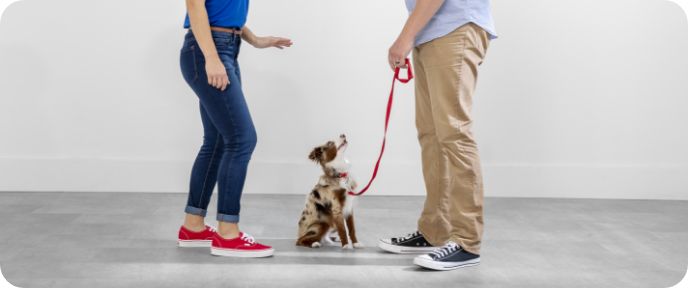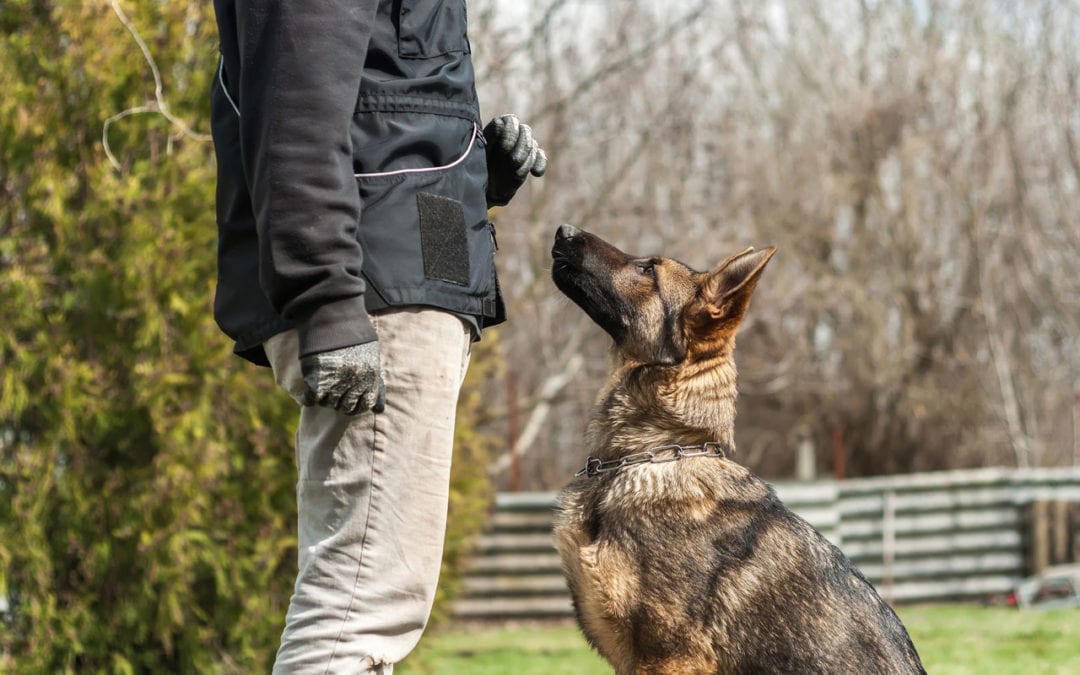Common Mistakes to Avoid in Puppy Training and How to Correct Them
Common Mistakes to Avoid in Puppy Training and How to Correct Them
Blog Article
Top Pup Educating Methods to Make Sure a Well-Behaved Animal
Efficient young puppy training is essential for growing a mannerly companion, and numerous methods can dramatically affect a canine's development. Amongst these, positive reinforcement stands apart as a foundational method, advertising trust fund and motivating desirable behaviors. Uniformity in commands and early socialization are just as crucial, laying the foundation for a well-adjusted family pet. Furthermore, the roles of pet crate training and leash etiquette can not be forgotten. As we check out these methods further, it comes to be clear that the success of puppy training pivots on a combination of techniques that can change your pet dog's habits in amazing means.
Favorable Reinforcement Strategies
Making use of favorable support strategies is necessary for reliable puppy training, as it motivates desired habits with rewards instead of punishment. This approach capitalizes on the all-natural learning processes of pets, reinforcing etiquette by providing substantial and immediate benefits, such as deals with, appreciation, or playtime. By associating positive results with specific actions, pups are most likely to duplicate those actions in the future.
Rewards should be given immediately after the desired actions happens to produce a clear connection in the pup's mind. Furthermore, differing the kinds of rewards can preserve a pup's passion and motivation throughout the training process.

Uniformity in Training Commands
Preserving uniformity in training commands is important for strengthening the lessons learned with positive reinforcement methods. Pets thrive on routine and predictability, so utilizing the exact same spoken commands and hand signals for specific habits is crucial. This harmony helps puppies comprehend what is expected of them, lowering complication and aggravation for both the instructor and the pet.

Timing additionally plays a considerable role in uniformity. Commands must be delivered promptly throughout training sessions and followed instantly by favorable reinforcement, such as treats or appreciation. This immediate action aids strengthen the organization in between the command and the desired behavior.
Including consistency right into training sessions will develop a steady learning atmosphere, advertising quicker mastery of commands. Inevitably, a well-structured technique fosters a solid bond in between the young puppy and its proprietor, resulting in an extra well-behaved and loyal pet dog.
Socialization With Various Other Animals
Socialization with other pet dogs is important for a pup's advancement, as it aids them learn proper behaviors and communication abilities in diverse social contexts. Early communications with different animals can significantly influence a young puppy's temperament and versatility in various circumstances. When pups are subjected to a selection of animals, they become much more positive and much less fearful, which can stop possible behavioral problems later on in life.

Teach your young puppy to identify signals from various other pets, such as indications of playfulness or discomfort, promoting mutual regard and understanding. Routine socializing not only improves your pup's social skills but additionally contributes to their general health, creating a much more harmonious living environment.
Pet Crate Training Advantages
Recognizing the countless advantages of pet crate training can significantly enhance both the puppy's and proprietor's experience. Crate training provides a secure and safe setting for pups, ensuring they feel shielded when laid off. This complacency can dramatically reduce anxiousness and tension levels for both the proprietor and the family pet.
In addition, cages work as a valuable house-training device. Young puppies naturally avoid staining their resting location, thus encouraging them to hold their bladder until they are let outdoors. This reaction can speed up the house-training procedure, promoting good behaviors beforehand.
When not being watched,Crate training also helps in managing a pup's behavior - puppy training. By giving a designated space, owners can avoid damaging actions, such as chewing on furnishings or getting involved in harmful substances. Furthermore, crates can be helpful during traveling, offering a familiar space that can aid relax a pup in brand-new atmospheres.
Lastly, developing a crate routine urges freedom, permitting puppies to find out how to be alone without anxiety. Overall, pet crate training is a reliable method for promoting self-control, safety, and peace, leading to a well-adjusted, well-behaved animal.
Chain Training Essentials
Leash training is a basic element of responsible family pet ownership that guarantees a secure and pleasurable walking experience for both the young puppy and its proprietor. Proper chain training begins early, preferably during the pup's socialization duration. This training helps establish excellent habits and advertises favorable behaviors when out in public.
To start, select a Read Full Report comfortable collar or harness that fits your pup well. Connect a sturdy chain, ensuring it is not also long, as this can bring about pulling and unpredictable habits. Beginning in a quiet atmosphere to reduce interruptions and progressively present your pup to brand-new environments.
Use positive support strategies, such as deals with and appreciation, to motivate your young puppy to walk next to you. If your young puppy pulls, stop strolling and wait for them to return to your side prior to proceeding.
Furthermore, integrate short training sessions with fun distractions to construct your pup's emphasis. With commitment and perseverance, leash training will certainly result in a hospitable companion, making walks delightful for both the pup and the proprietor.
Verdict
In verdict, using effective pup training methods is important for developing a mannerly family pet. Positive support promotes count on and encourages wanted habits, while consistency in commands help in comprehension. Socializing with various other animals enhances adaptability and social abilities, and cage training gives a safe environment that sustains house-breaking initiatives. Chain training establishes appropriate walking routines, contributing to delightful outings. On the whole, these methods collectively advertise a harmonious partnership between young puppies and their proprietors.
As we explore these techniques better, it becomes clear that the success of young puppy training pivots on a mix of techniques that can transform your pet dog's behavior in amazing means.
Making use of positive reinforcement methods is crucial for effective young puppy training, as it urges desired habits through benefits instead than penalty.Crate training additionally helps in taking care of a pup's see this page behavior when not being watched.Leash training is a basic aspect of accountable family pet ownership that makes sure a enjoyable and safe walking experience for both the puppy and its owner.In conclusion, employing efficient young puppy training methods is vital for creating a mannerly family pet.
Report this page